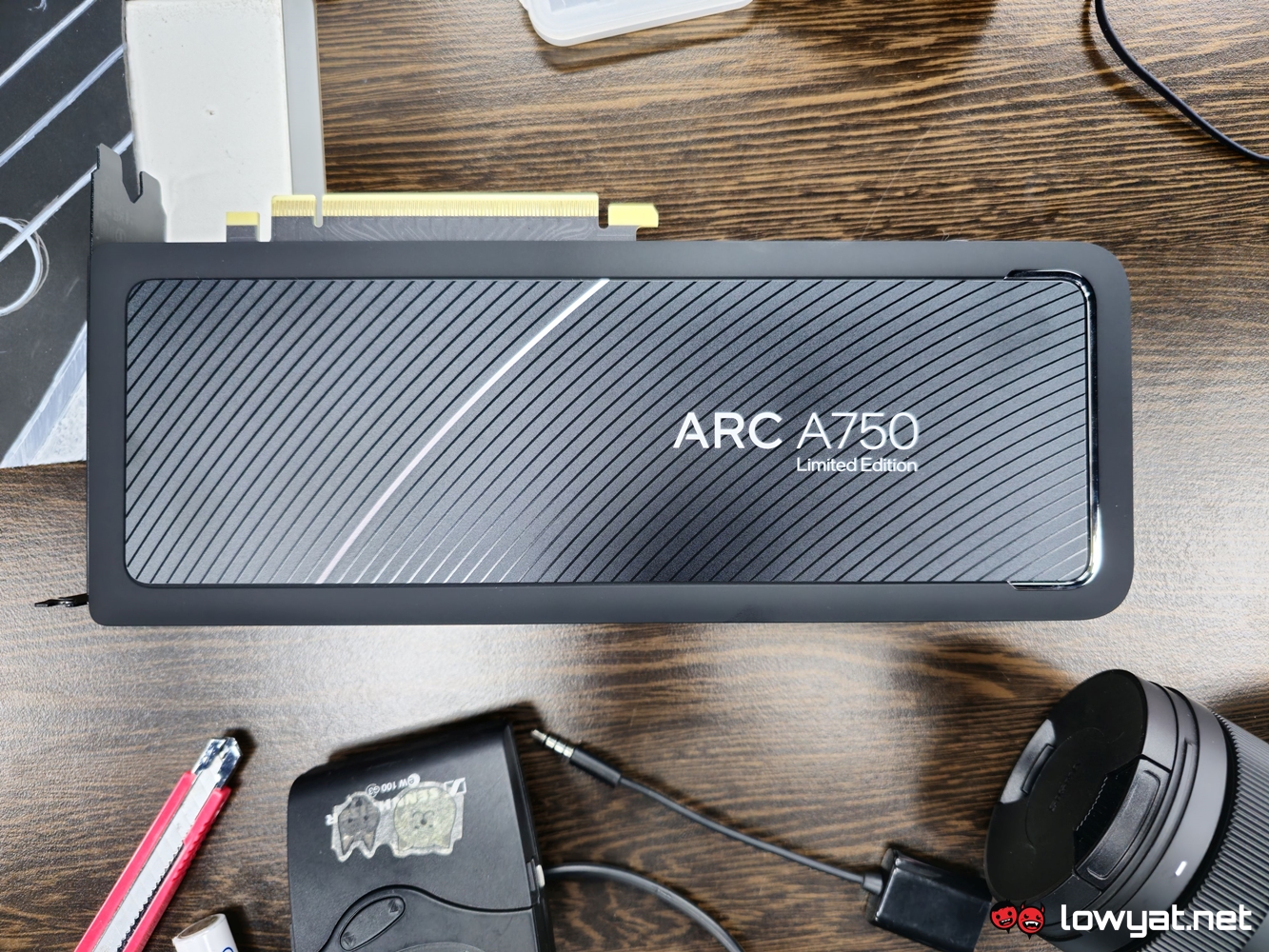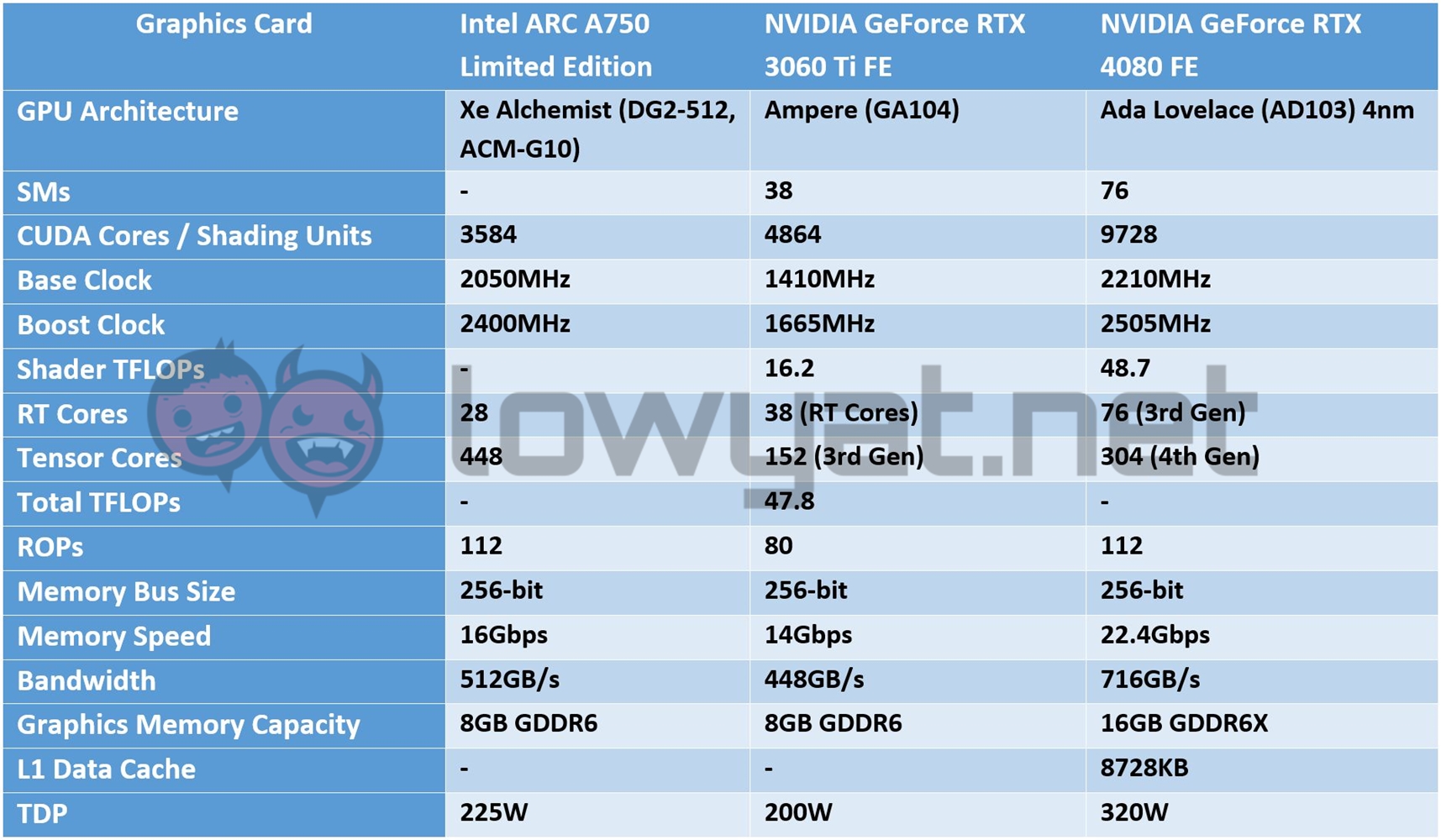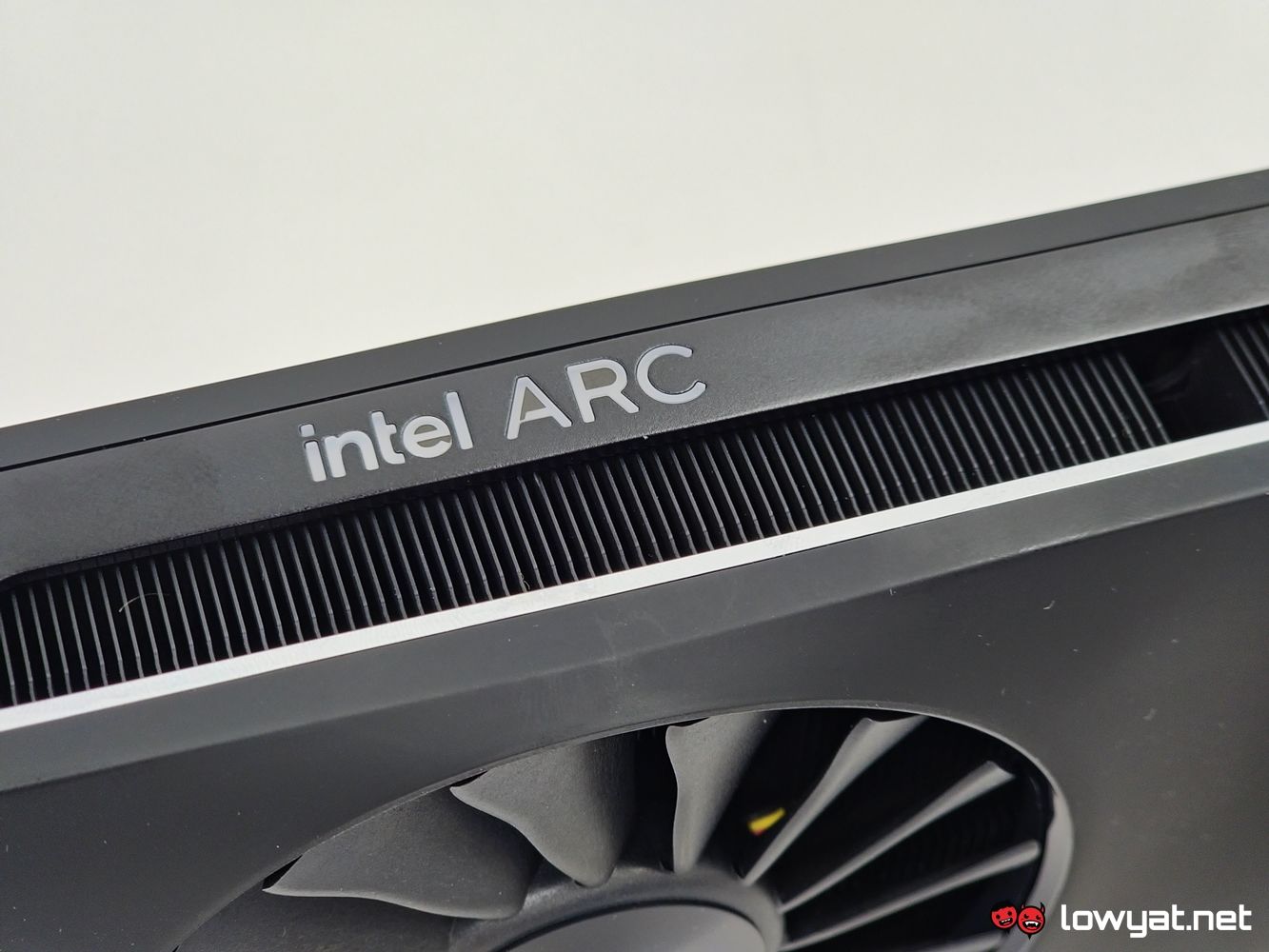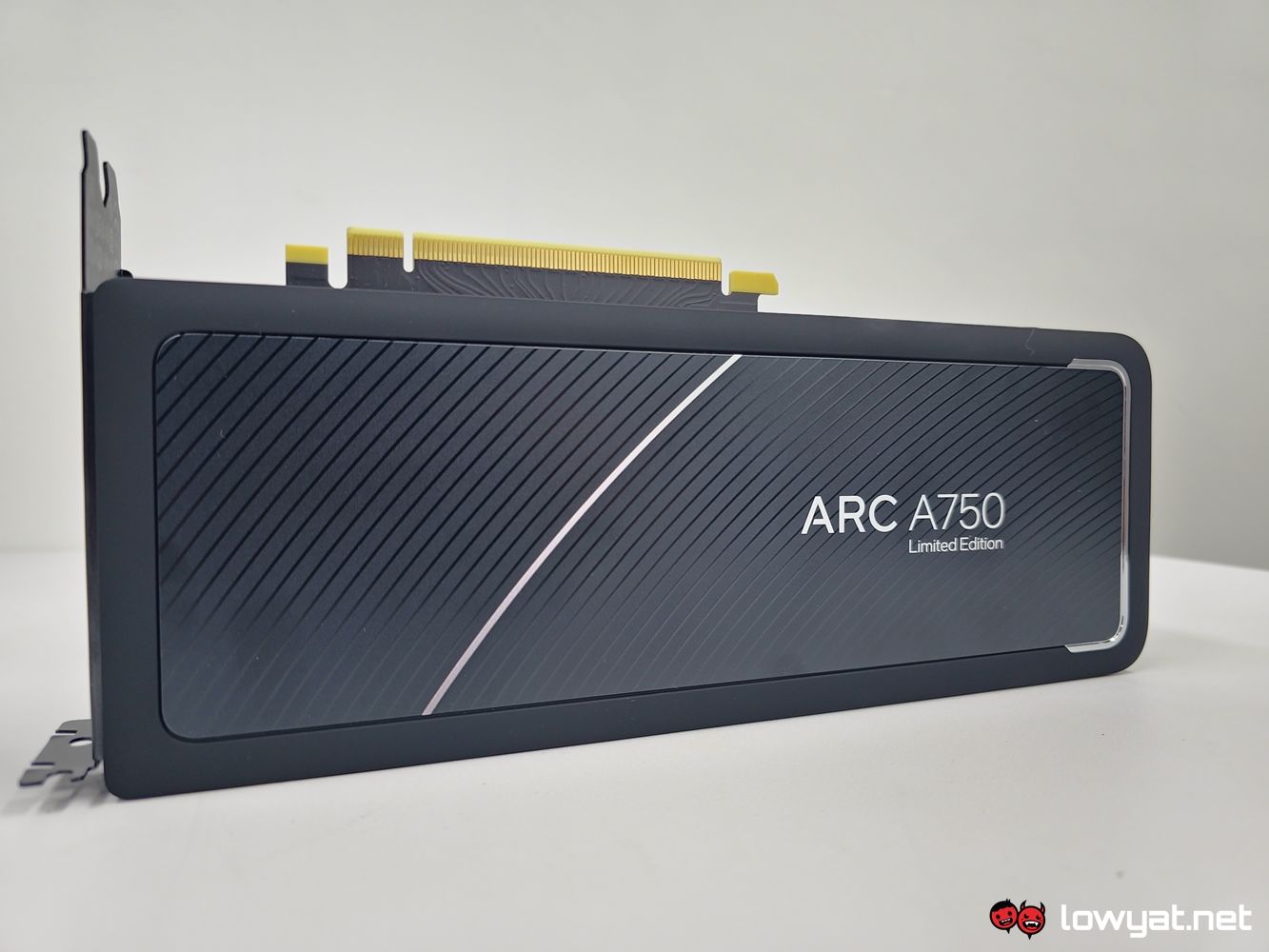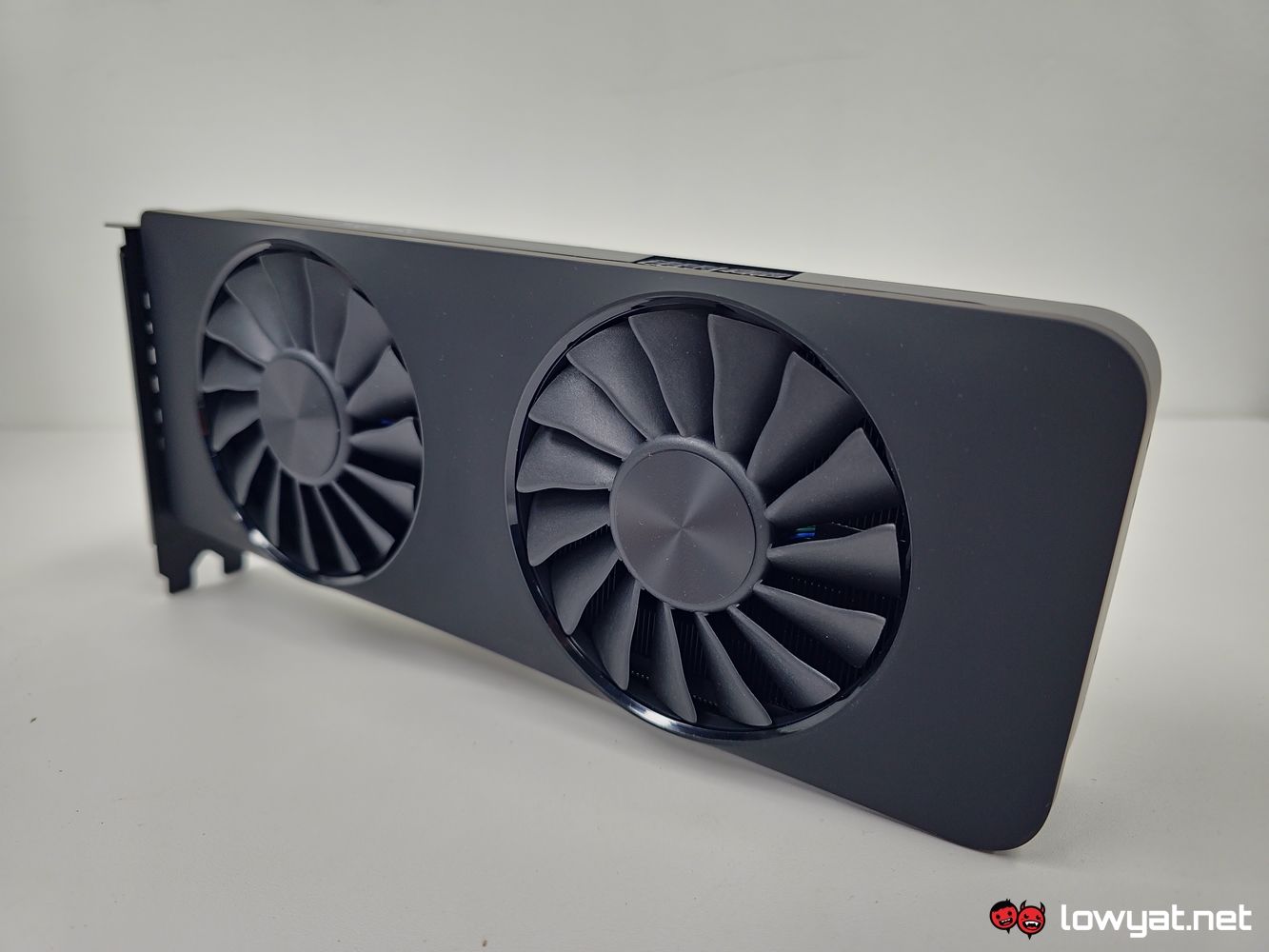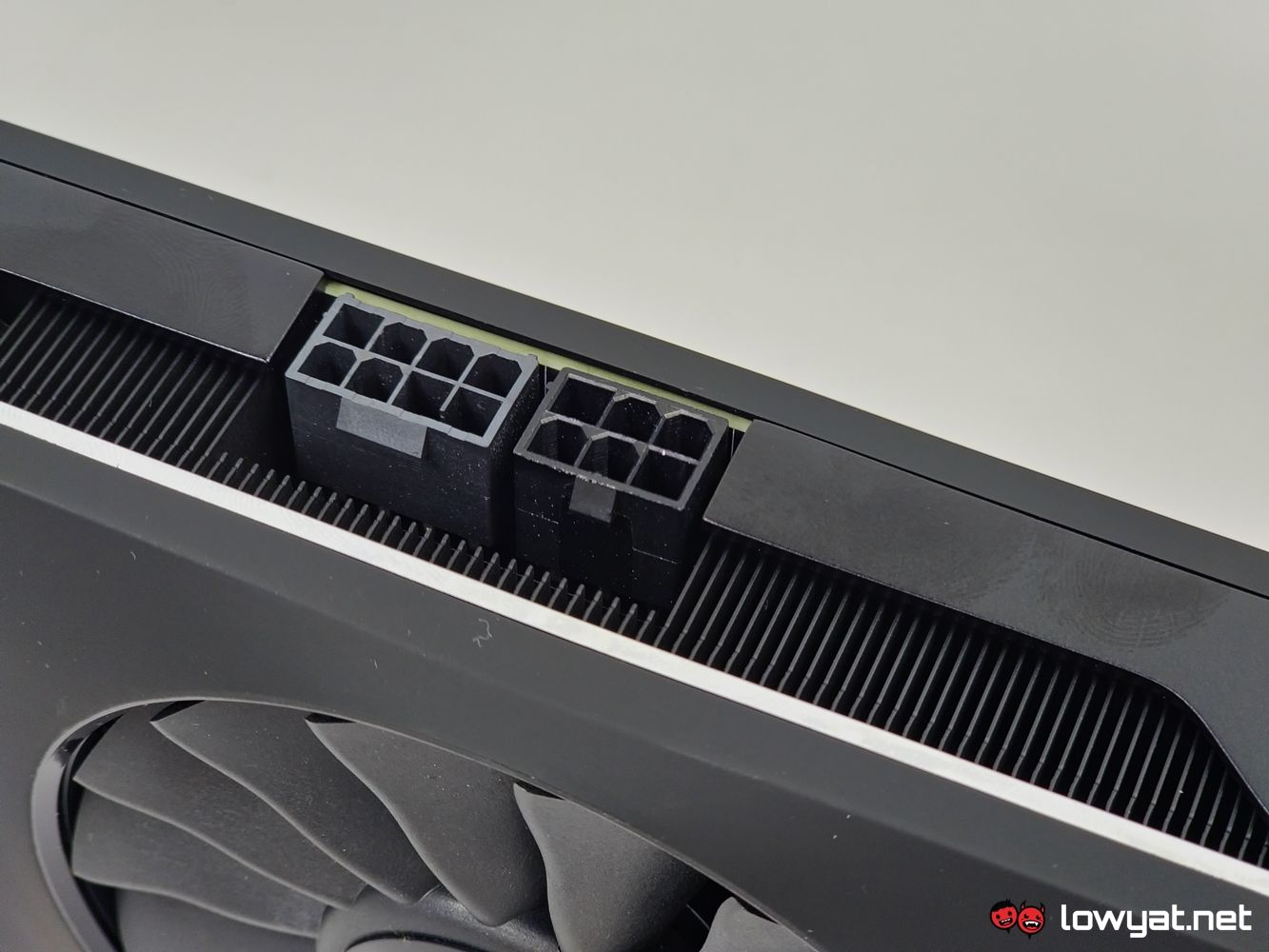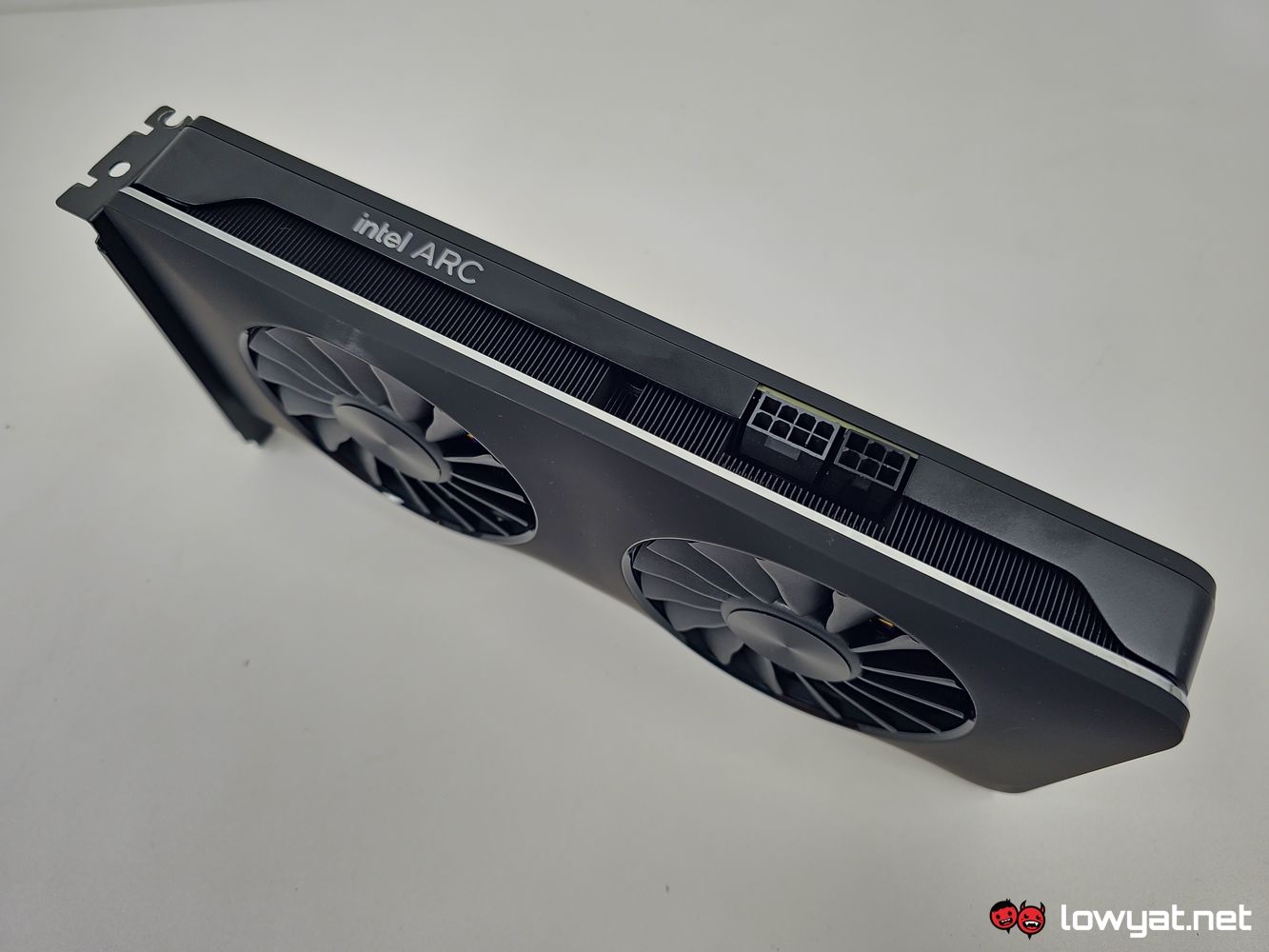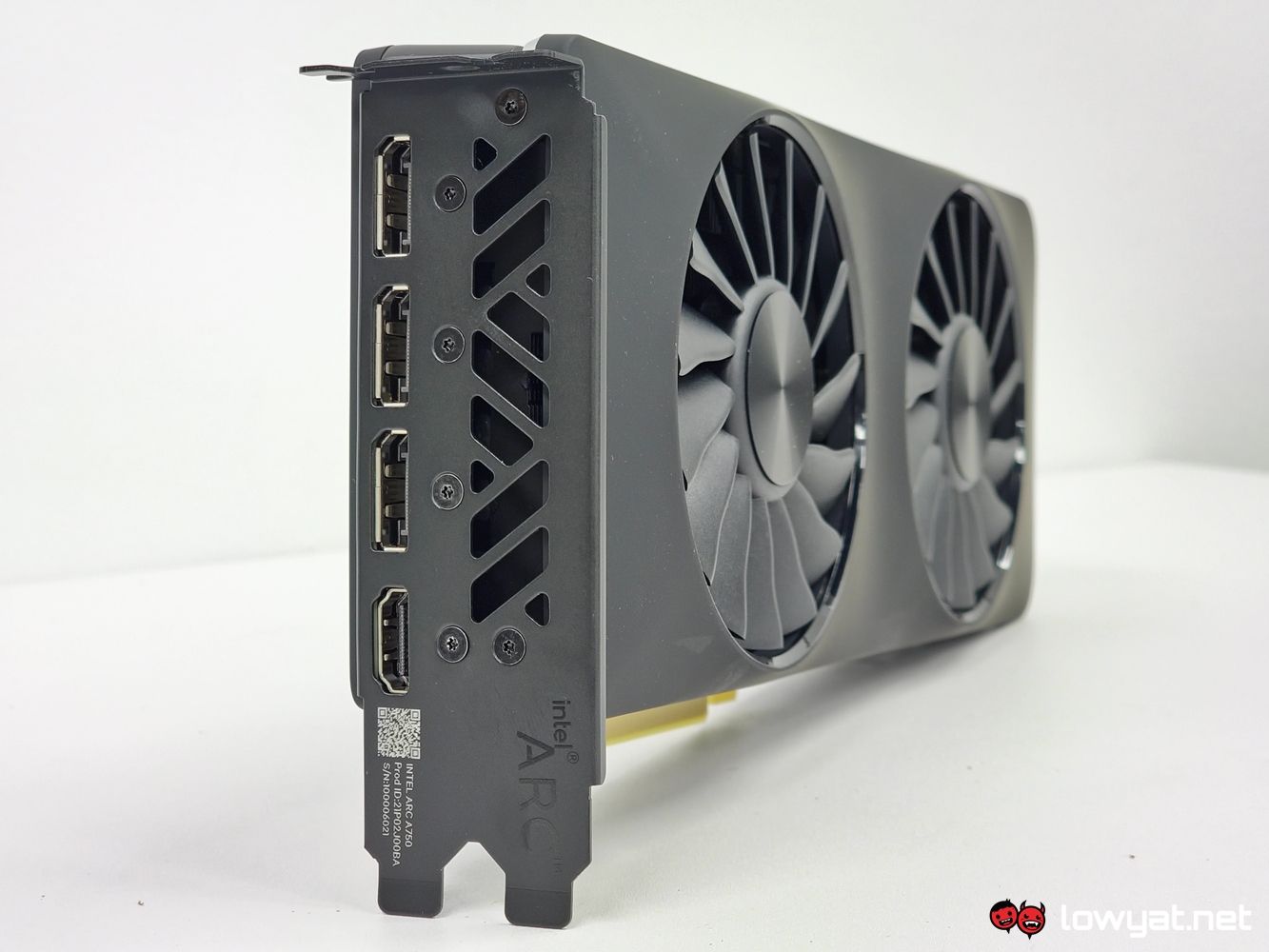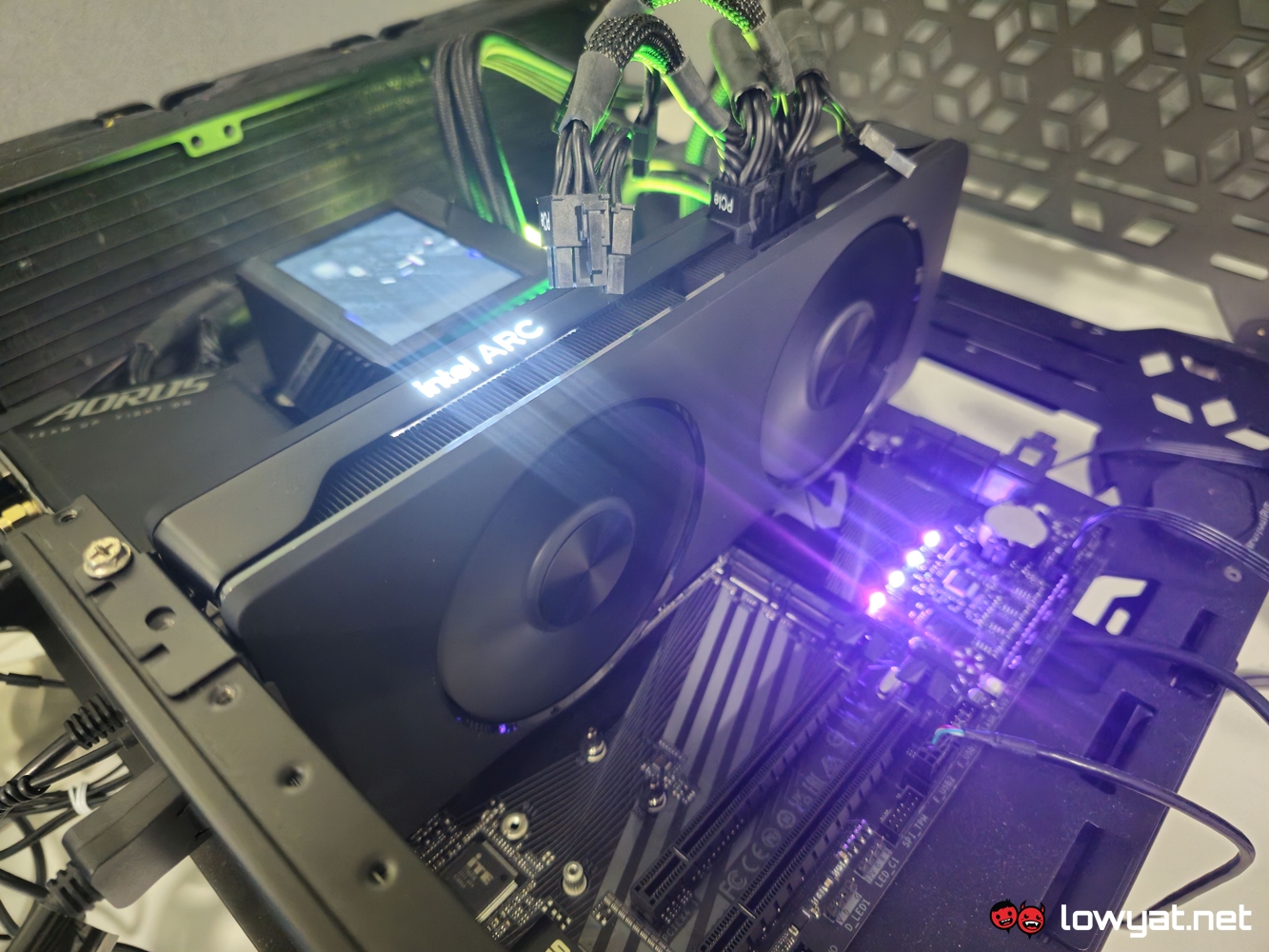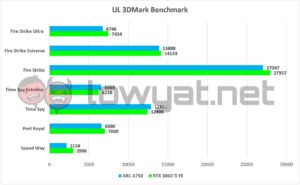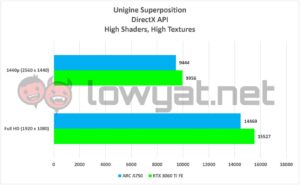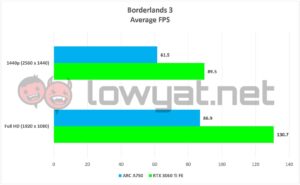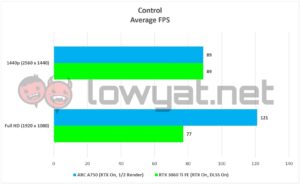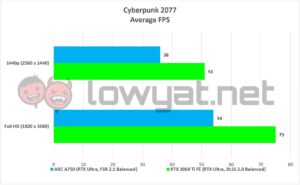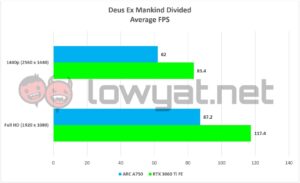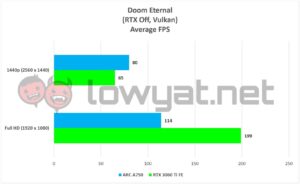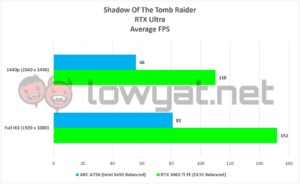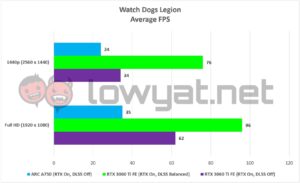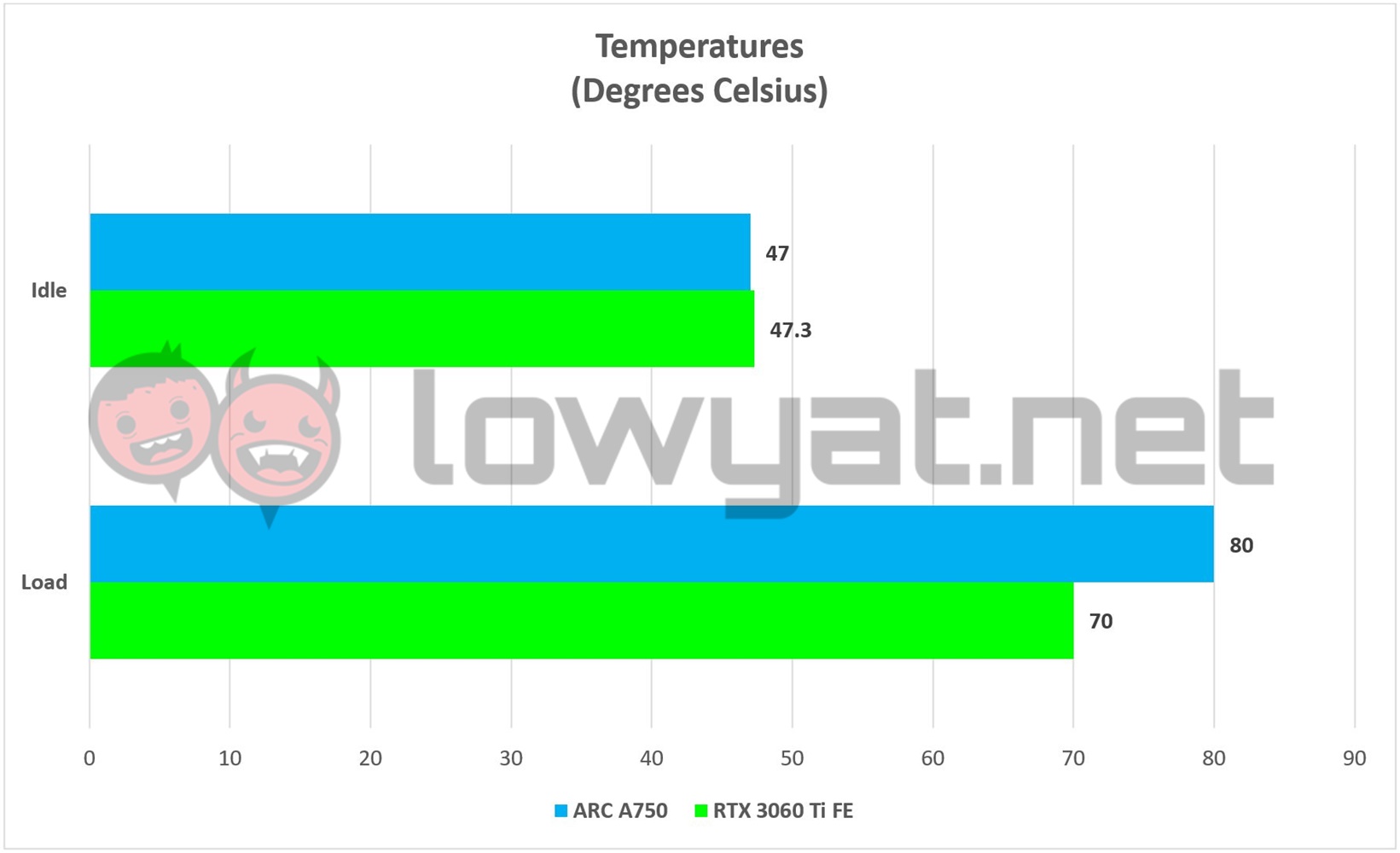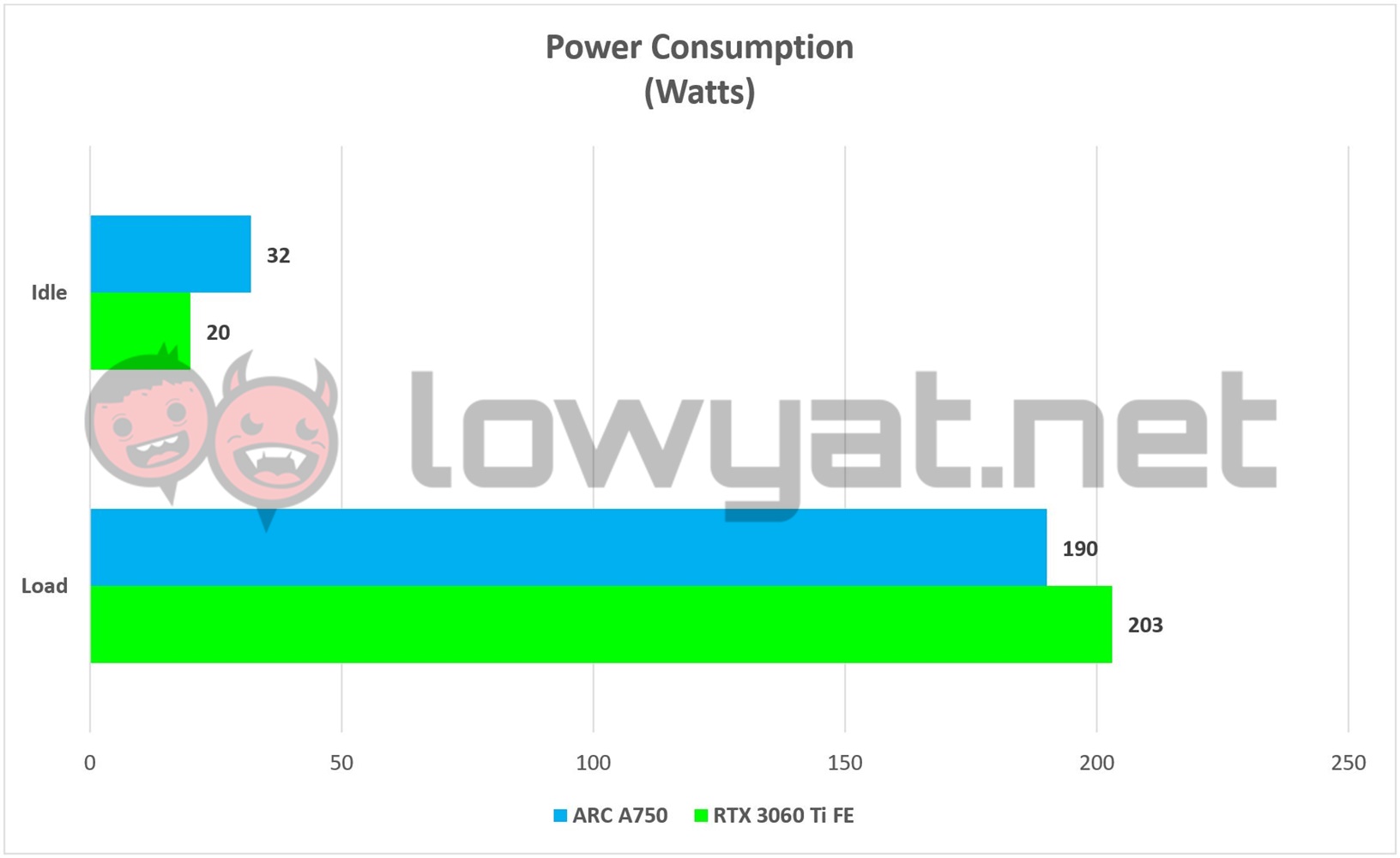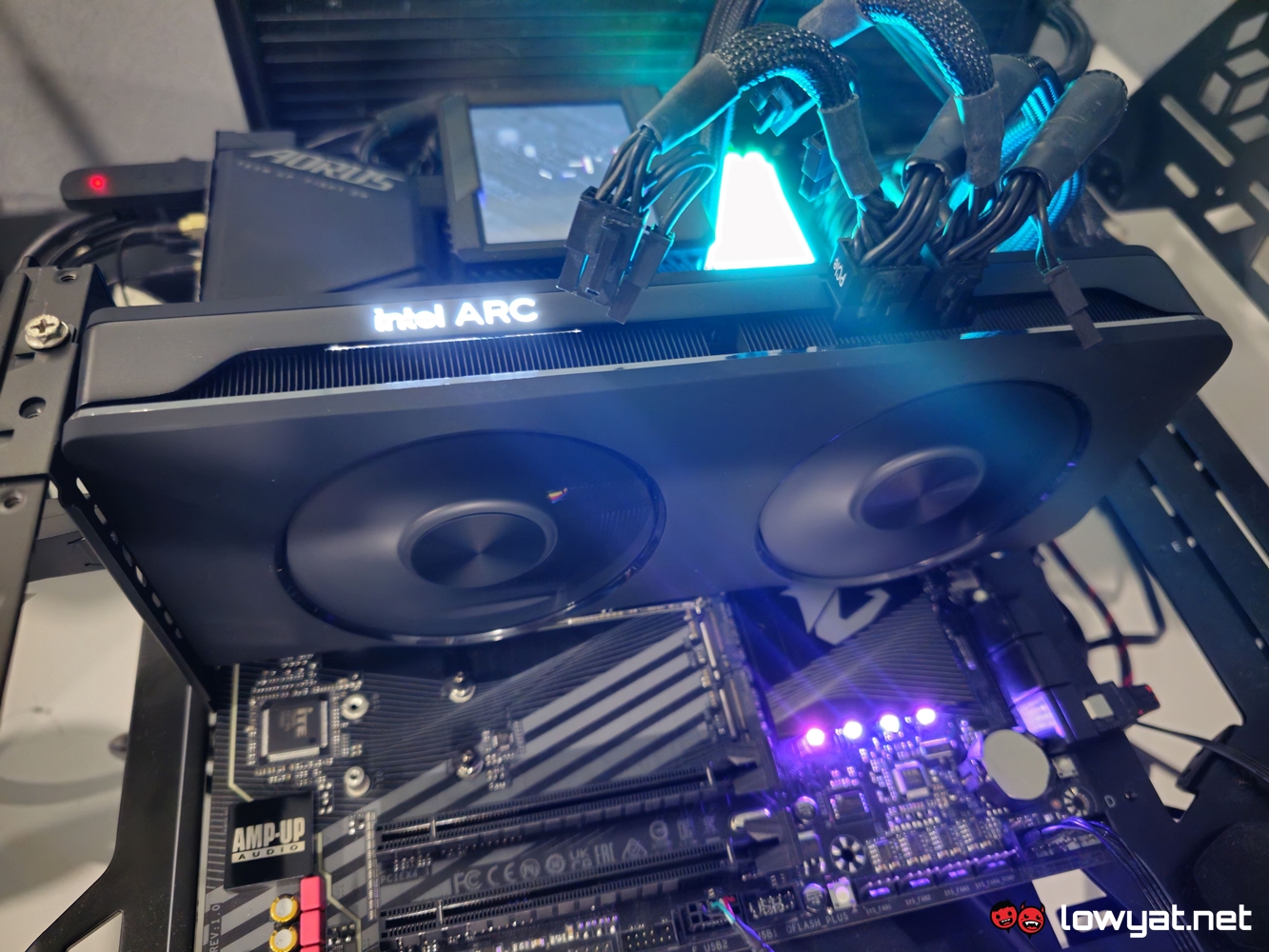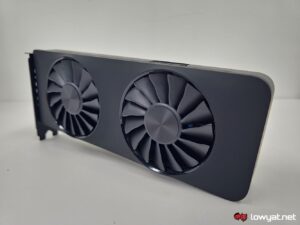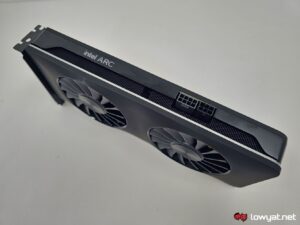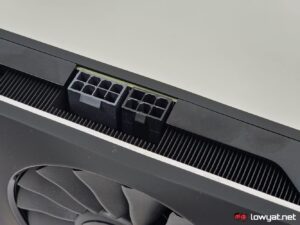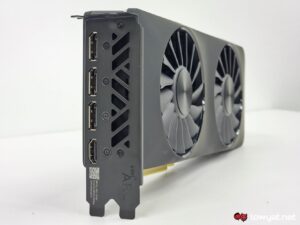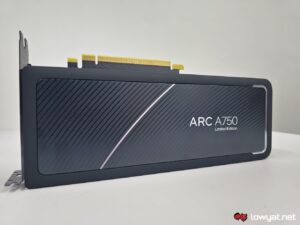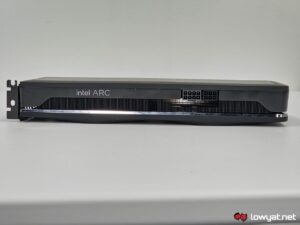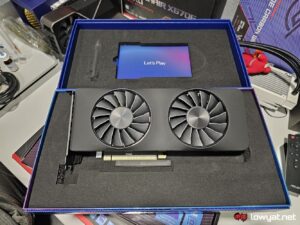The Intel ARC A750 has been out since October 2022 and is the second Alchemist-based graphics card to come out of the chipmaker’s discrete graphics division, right after the A770. In this review, Intel has kindly provided us with the GPU and more specifically, the model skinned in its Limited Edition reference cooler shroud.
The ARC A750 marks a few milestones in my books, the first among which is that this is the first Intel Xe-powered graphics card to enter our lab. Of course, the question that I’m curious to answer right now is exactly how much bang can you get for your buck with this card. So. let’s jump right into it.
Specifications
Design
Now, before I begin, I think it’s only fair I mention that we’re unlikely to get Intel’s ARC A750 in the reference shroud that you see here, at least not in an official capacity. Just as its rivals would do with their respective lower-tier and mid-range GPU, Intel is leaving the creativity of keeping it cool to its AIB partners.
That being said, ARC A750 Limited Edition that I have in my labs is…well, very plain-looking and unassuming in its aesthetics. It sports an all-black cooler shroud around the front and back, and the material enveloping feels more like a mix of metal and thick, matte plastic material.
There isn’t much to shout with regard to the dual fans on the ARC A750 either. They’re both black, have numerous fins, and have zero RPM technology built into them, although they never actually stay still the minute I start up one of the programs in my list.
Perhaps the one comforting sight of the ARC A750 is that, along with AMD, the card doesn’t require a special PCIe power port in order to run and relies simply on a basic 8+6 pin combo.
On paper, the ARC A750 isn’t actually all that bad, given its own architecture; the card runs on Intel Xe cores, and the GPU is based around TSMC’s 6nm process node, which is obviously smaller than the 8nm die lithography of the RTX 30 Series’ Ampere architecture. For another matter, it’s got its own set of proprietary technology, including Intel’s Xe Matrix Extensions (XMX) Engines, and Vector Engines. Oh, and it is also fitted with its own ray-tracing cores, to which it has 28 units of said cores.
Ports-wise, this GPU features three DisplayPort 2.0 ports, and one HDMI 2.1 port, although why Intel bothered giving it such high bitrate ports when it is clearly never going to be able to reach the resolutions they were designed for, I don’t quite know or fully understand at this point.
Testbed
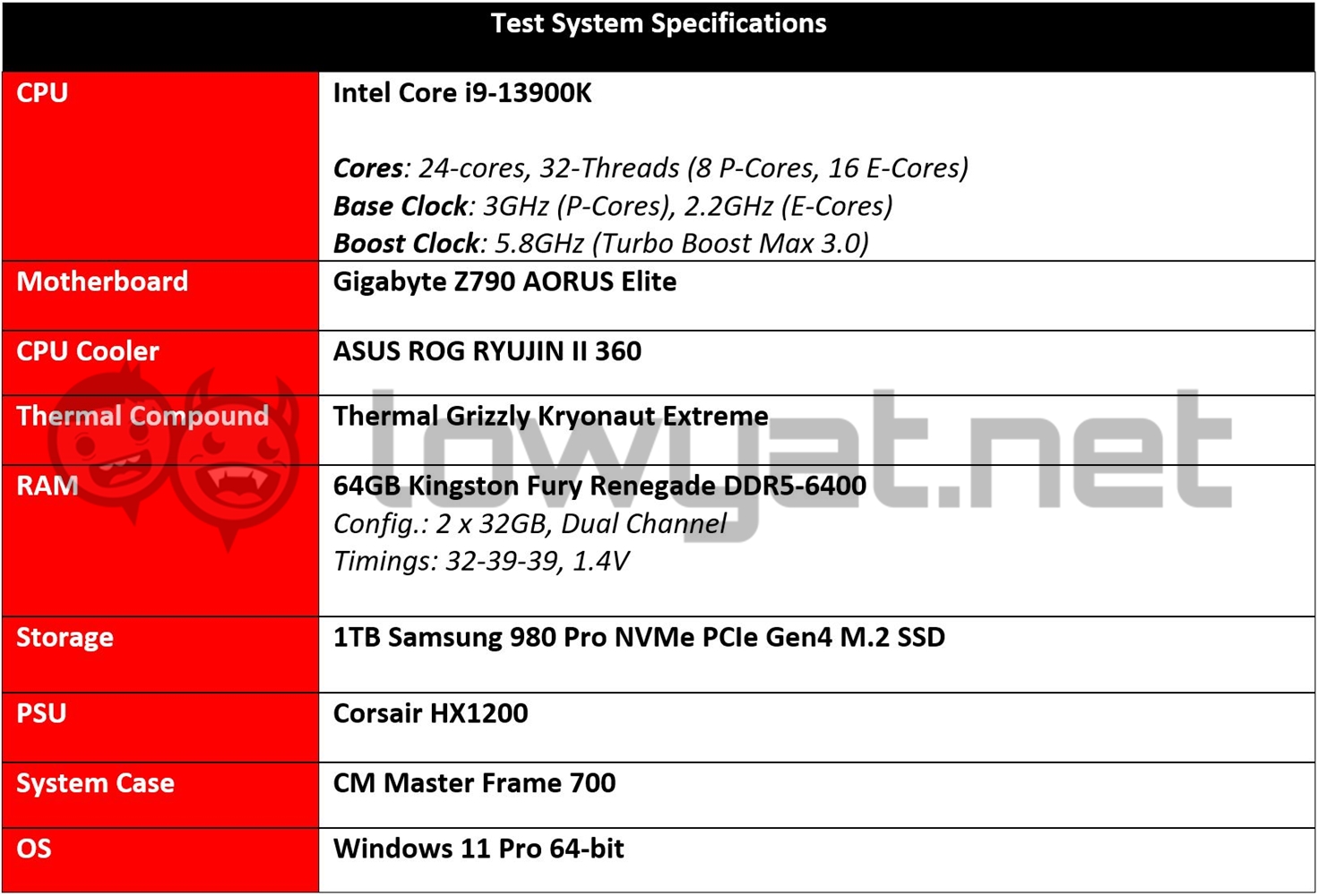 In order to test the ARC A850, I decided on switching out my usual AMD X670E testbed with an Intel-based one. In this case, I was fortunate enough that Gigabyte was able to loan me one of its high-end Z790 AORUS Elite motherboards to be used with my Intel 13th Gen CPUs. On that note, I’ll be conducting this review with the Core i9-13900K, which is the Blue team’s second most powerful CPU, after the 13900KS.
In order to test the ARC A850, I decided on switching out my usual AMD X670E testbed with an Intel-based one. In this case, I was fortunate enough that Gigabyte was able to loan me one of its high-end Z790 AORUS Elite motherboards to be used with my Intel 13th Gen CPUs. On that note, I’ll be conducting this review with the Core i9-13900K, which is the Blue team’s second most powerful CPU, after the 13900KS.
As for the measuring stick, the choice was obvious at this stage: the NVIDIA GeForce RTX 3060 Ti and more specifically, the Founders Edition version of the card. However, this also means that I have to retest the card with the current CPU and motherboard as well, seeing how the last time I touched the GPU, it was with an older Ryzen 5000 Series system.
On another note, I will also be benchmarking the ARC 750 and RTX 3060 Ti with ray-tracing and their respective AI upscaling technology, whenever and wherever possible. Further, I will be testing both card in just two resolutions: 1440p and Full HD. Also, I will be testing them with no overclocking conducted on them.
Benchmarks
As I said, the internal components of the ARC A750 aren’t shabby by any measure of the word. Like all good hardware, what really helps the component push itself to the limit are the drivers. To that end, Intel’s new 31.0.101.4146 WQHL drivers for the ARC GPUs have proven to be an improvement over the last one. That is, based on multiple reports by folks that were lucky – or unlucky, depending on which side of the fence you view this point from – enough to actually have a go at it, prior to the release of these drivers.
In my review, the provided drivers churn out a relatively clean experience, both synthetically and in real-world testing. I will be honest here: given the infancy of the ARC series, let alone the ARC A750, I wasn’t holding out much hope for its overall performance. To my surprise, its performance actually isn’t too bad. With benchmarks like 3DMark, the card actually runs through the Port Royal test with relative ease, and surprisingly, with average framerates of 30 fps. It’s more or less the same story with the new Speedway test, where the GPU is able the power through the ray-tracing intensive test.
Over on the real-world gaming benchmark side of things, the ARC A750 actually shows a lot of promise, and I’m not just saying that. Yes, it is both painfully and obviously clear that the card just isn’t as powerful or as well-tuned as the RTX 3060 Ti, but take a step back and you’ll find that, across the majority of our test titles, it actually manages to hold its own. For that matter, all titles were set to run at their highest graphics presets, and that’s excluding the activation of ray-tracing and whatever AI upscaling feature both cards are able to take advantage of. In other words, if the A750 and provided drivers could run with those presets, it goes without saying that lowering those presets could improve in-game performance.
On a related note, I am a little amazed that the ARC A750 is able to run Cyberpunk 2077 with ray-tracing running at Psycho and FSR 2.1 set to Balanced. For context, the average 36 fps at 1440p is merely a guideline, but in one playthrough, the A750 is capable of sustaining a decent 40 fps on average, albeit within the seedy back alleys and rundown, abandoned factory plots, filled with the occasional and sporadic spattering of random mobs and civilians.
Of course, that isn’t to say that the A750 and the drivers I tested it with were flawless. Throughout my review of the card, the typical signs of poor driver optimisation crept up in the forms of artifacts, overblown pixels at random points in the game, to texture glitches that look like they were purposely trying to sensor an area or subject in-game. This included DirectX 11, 12, and Vulkan titles, such as Deus Ex Mankind Divided and DOOM Eternal.
Temperature and Power Consumption
Unsurprisingly, the ARC A750’s thermals are not out of the ordinary. You have to remember: that the cooler shroud of this Limited Edition card isn’t complicated. Frankly, the honour of sophisticated design still goes to the RTX 3060 Ti FE, and it’s not just for show; that Dual Axis Flowthrough design is actually effective in keeping the heat generated by the silicon at bay, and that is why the mid-range card from team green is considerably cooler than its rival from the Blue chipmaker.
As for power consumption, I didn’t observe anything out of the ordinary here, although the ARC A750 was clearly pulling well below its rated TDP of 225W. No matter what game title or benchmark, it seems to cap itself at the 190W, and this became the norm throughout the entire review process.
Conclusion
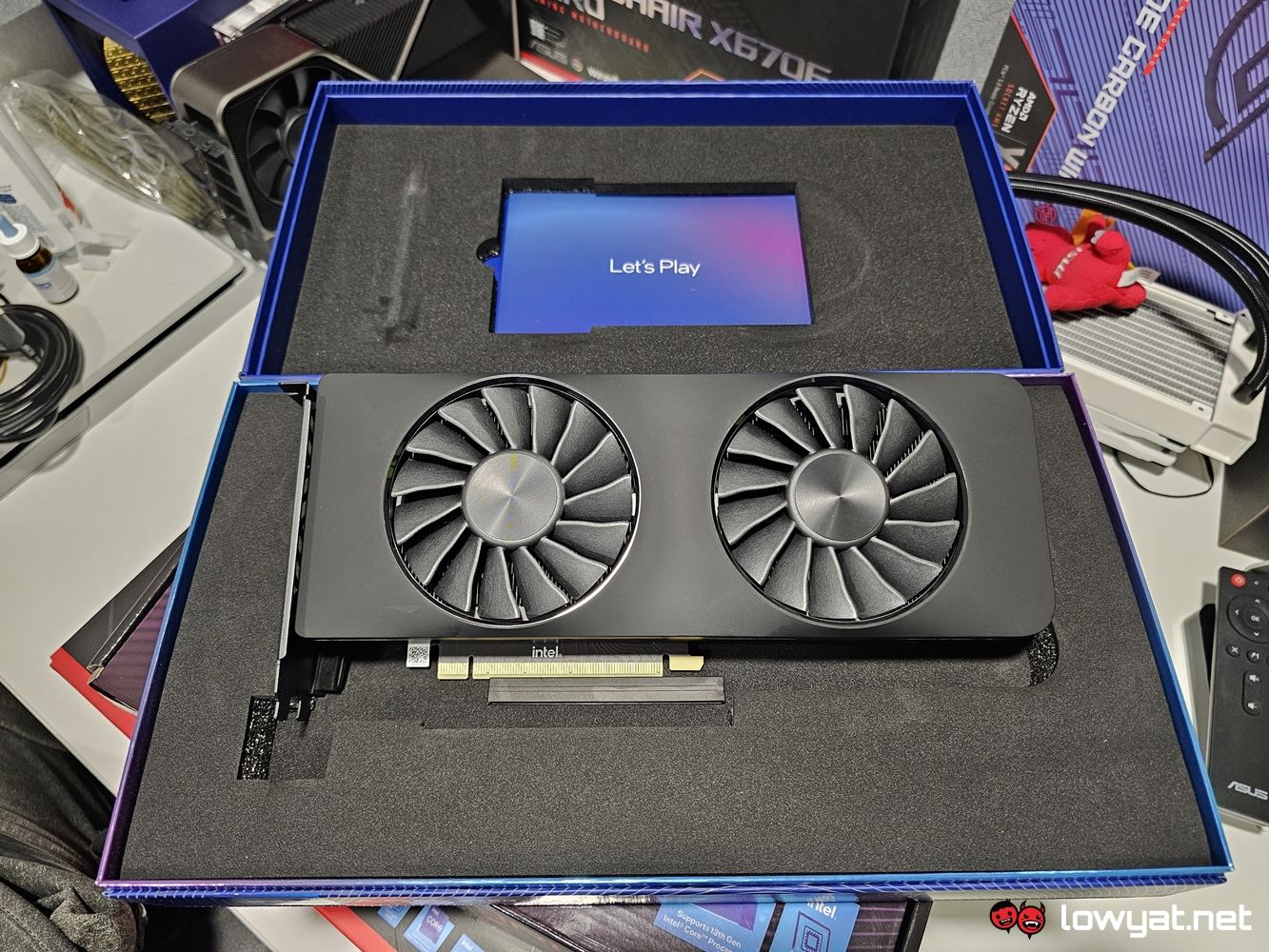 Having spent time with the Intel ARC A750, I can actually see what the chipmaker is going for here, along with their efforts in trying to get this “mid-tier” graphics card to play nice. But as I mentioned before, the hardware that defines the GPU can only go so far and after that, it needs well-designed and properly coded software that helps to milk every last pixel and computational power out of those Xe cores. To that end, it’s safe to say that Intel is heading in the right direction with the latter.
Having spent time with the Intel ARC A750, I can actually see what the chipmaker is going for here, along with their efforts in trying to get this “mid-tier” graphics card to play nice. But as I mentioned before, the hardware that defines the GPU can only go so far and after that, it needs well-designed and properly coded software that helps to milk every last pixel and computational power out of those Xe cores. To that end, it’s safe to say that Intel is heading in the right direction with the latter.
There’s also the price of the ARC A750. With a global SRP of US$289 (~RM1279), it is certainly more affordable than both the Ti and non-Ti versions of the GeForce RTX 3060 Ti. On average, those two GPUs retail between RM1600 and RM2000. And while the model itself – I am of course referring to the GPU as a whole, and not the Limited Edition in this case – isn’t being widely sold in the country, a quick search shows that the stores that do sell them, do so either at SRP or just a couple hundred ringgit more, at most. Again, that’s not too bad for a card that’s actually punching slightly above its weight.
Would I recommend the ARC A750 over what is already tried and tested? Honestly, it really depends on what tickles your fancy and what your budget is like. Yes, the A750 is moderately more affordable than the other, but more than money, you’re also going to be investing a lot of patience with the ARC series, but given what I’ve seen, it’s likely that gaming on this card is likely to get better over time.
Photography by John Law.
Follow us on Instagram, Facebook, Twitter or Telegram for more updates and breaking news.


